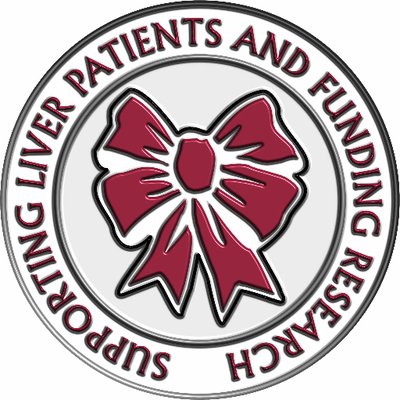Hepatitis E
- Communicable
- Viral Infections (RNA)
- Hepeviridae
Hepatitis E virus (HEV), also referred to as enterically transmitted non-A non-B hepatitis virus, has been associated with waterborne outbreaks since 1955. Availability of serological tests for hepatitis A and hepatitis B virus, identified this virus as a different causative agent of acute hepatitis. HEV is endemic in developing countries and associated with poor sanitation and water borne outbreaks. However, in developed countries, traditionally HEV was associated with travelers returning from HEV endemic countries. Zoonotic or food borne transmission has contributed to increase in number of locally acquired cases in developed nations. The epidemiology, pathogenicity and mode of transmission varies with infecting genotype of this virus.
Clinical Features
HEV causes self-limited acute hepatitis. Majority of cases are asymptomatic with rates varying from 50% in developing countries to 67-98% in developed countries. Mean incubation period of hepatitis E is 40 days (15-60 days). Clinical features are non-specific including anorexia, nausea, vomiting, diarrhea, fever,
jaundice
Jaundice
Yellow discoloration of the skin, which also can result in exteme itchiness. Usually associated with liver diseases, such as viral hepatitis.
, hepatomegaly. In developing countries, case fatality rate of up to 4% during outbreaks and maternal mortality rate of ~25% have been reported.
Clinical features of hepatitis E are non-specific and in majority of developed countries diagnosis is based on risk factors including travel to endemic countries or consumption of contaminated food/meat. Different laboratory methods of HEV diagnosis are:
Immune Electron Microscopy
This technique involves use of stool sample treated with serum containing antibodies against HEV. Presence of virus is confirmed by agglutination and detection using electron microscope.
Serological tests
The tests involve detection of HEV IgG, IgM, IgA antibodies or HEV
antigen
Antigen
A structural molecule that is recognised by the adaptive immune system, binding to a T cell receptor (TCR) or B cell receptor (BCR) or antibody.
in serum or
plasma
Plasma
Blood plasma is the yellow-colored portion of the blood carrying cells and proteins throughout the body.
using enzyme immune assay (EIA). HEV IgG detection indicates previous exposure as the antibody can persist for years and are suitable for seroprevalence studies. Acute HEV cases are diagnosed by detection of HEV IgM, as this class of antibody can persist for 6 months. IgA based assay has been suggested for acute HEV diagnosis with no IgM response. EIA for direct detection of
antigen
Antigen
A structural molecule that is recognised by the adaptive immune system, binding to a T cell receptor (TCR) or B cell receptor (BCR) or antibody.
has been developed for early diagnosis of infection.
Nucleic acid amplification assays
Such assays are based on detection of viral
RNA
Ribonucleic Acid (RNA)
The biological molecule that contains long chains of nucleotide units of a nitrogenous base, a ribose sugar and a phosphate is known as Ribonucleic acid. RNA is single stranded molecule with ribose, unlike DNA that is double stranded with deoxyribose. Another difference between a DNA and RNA molecule is presence of base uracil instead of thymine in RNA.
in blood, which are useful in diagnosis of immunocompromised patients who do not develop antibody responses. Nucleic acid amplification methods include nested RT-PCR, real time PCR. Transcription mediated amplification has been developed for nucleic acid testing for screening of blood.
Biochemical tests
These tests include detection of increased levels of bilirubin, alanine transaminase, aspartate aminotransferase in acute HEV infection. However, these tests are non-specific as they are detectable in other viral hepatitis.
Pathogenesis
An in vitro study proposed that the truncated structural
protein
Protein
Large biomolecules, which consist of one or more long chains of amino acid residues. They perform a vast array of functions within organisms including transporting molecules, providing cellular structure and catalysising processes such as DNA replication.
(p239) of HEV, binds to heparan sulphate proteoglycan receptors. HEV replication involves entry of the virus by
endocytosis
Endocytosis
The process of absorption of molecules present outside the cells by the method of engulfment with the cell membrane is known as endocytosis.
, uncoating of capsid, translation and replication of
RNA
Ribonucleic Acid (RNA)
The biological molecule that contains long chains of nucleotide units of a nitrogenous base, a ribose sugar and a phosphate is known as Ribonucleic acid. RNA is single stranded molecule with ribose, unlike DNA that is double stranded with deoxyribose. Another difference between a DNA and RNA molecule is presence of base uracil instead of thymine in RNA.
in the host
cytoplasm
Cytoplasm
Refers to all of the material within a cell which is enclosed by the cell membrane, except for the cell nucleus. The main components of the cytoplasm are cytosol and organelles (substructures within the cell).
, synthesis of capsid which packages
RNA
Ribonucleic Acid (RNA)
The biological molecule that contains long chains of nucleotide units of a nitrogenous base, a ribose sugar and a phosphate is known as Ribonucleic acid. RNA is single stranded molecule with ribose, unlike DNA that is double stranded with deoxyribose. Another difference between a DNA and RNA molecule is presence of base uracil instead of thymine in RNA.
to virions with subsequent release. HEV
pathogenesis
Pathogenesis
The biological mechanism that leads to a state of disease. It can refer to the origin and development of a disease, as well as whether it is recurrent, chronic and acute.
has been studied in Cynomolgus macaques intravenously infected with HEV containing bile or faeces. After 2-3 weeks of infection, increase in serum alanine aminotransferases, histopathological changes in liver, appearance of
antigen
Antigen
A structural molecule that is recognised by the adaptive immune system, binding to a T cell receptor (TCR) or B cell receptor (BCR) or antibody.
in liver, virus in bile and antibodies against HEV in serum were observed. In general, HEV
RNA
Ribonucleic Acid (RNA)
The biological molecule that contains long chains of nucleotide units of a nitrogenous base, a ribose sugar and a phosphate is known as Ribonucleic acid. RNA is single stranded molecule with ribose, unlike DNA that is double stranded with deoxyribose. Another difference between a DNA and RNA molecule is presence of base uracil instead of thymine in RNA.
appears in blood after 2-3 weeks of infection and persists for 4 weeks whereas in faces is detectable for 6 weeks. HEV IgM appears after 3-4 weeks of infection and declines after 3-6 months. HEV IgG is detectable after 4-5 weeks of infection and can persist for 12 years or more. Biopsies of acute
hepatitis E positive patients shows spotty necrosis and portal expansion of infiltrates of lymphocytes and polymorphonuclear
leukocytes
Leukocytes
The white blood cells of the immune system, that defend the body against infectious diseases and foreign materials are known as leukocytes.
, ballooning of
hepatocytes
Hepatocyte
A type of cell located in the liver which facilitates many liver functions, including protein storage and detoxification.
, presence of councilman bodies, bile ductular proliferation.
Comorbidities
Chronic HEV infection has been reported in solid organ transplant (kidney, liver and pancreas) recipients and in immune suppressive conditions like HIV. HEV can cause non-hepatitis manifestations like pancreatitis, thrombocytopenia, autoimmune phenomena, Guillian-Barré syndrome.
Cellular Characteristics
HEV is classified in the family Hepeviridae and the genus Hepevirus. The virus is approximately 30 nm in diameter with icosahedral symmetry. HEV is stable in bile due to absence of envelope and thus excreted in faeces.
Genetics
The HEV
genome
Genome
A collection of DNA which is capable of developing and maintaining an entire organism.
comprises of single stranded positive sense
RNA
Ribonucleic Acid (RNA)
The biological molecule that contains long chains of nucleotide units of a nitrogenous base, a ribose sugar and a phosphate is known as Ribonucleic acid. RNA is single stranded molecule with ribose, unlike DNA that is double stranded with deoxyribose. Another difference between a DNA and RNA molecule is presence of base uracil instead of thymine in RNA.
of 7.5 kb in length with three open reading frames (ORFs). ORF1 codes for non-structural proteins, ORF2 codes structural proteins and ORF3 codes cellular proteins. There are four genotypes of HEV which are characterized based on ORFs. Genotype 1 has been reported from Asia and Africa and 2 from Mexico and some African countries. Both genotypes include human strains. Genotypes 3 and 4 infect both humans and swine and are reported globally and in southeast Asia respectively. HEV genotypes 3 and 4 have been isolated from other animals (deer, mongoose, rats, rabbits, cattle or sheep).
Modes of transmission
HEV is commonly known to be transmitted through drinking contaminated water or consumption of raw or uncooked infected meat, especially pork. Other possible modes of transmission include contact with infected animals, blood transfusion, organ transplantation from infected donor and vertical transmission from infected mother to child.
Faceo-oral transmission
In developing countries such as India, Nepal, Bangladesh, Pakistan and Sudan, HEV outbreaks are commonly associated with faeco-oral transmission. Such a mode of transmission is caused by genotypes 1 and 2.
Food-borne and zoonotic transmission
HEV genotypes 3 and 4 have been reported to be associated with consumption of uncooked meat (pork) in developed countries. In the USA and Germany, genotype 3 has been detected in pig livers sold in grocery stores. Pigs are natural reservoirs of HEV and faceo-oral transmission in pigs can also occur with shedding of infectious HEV. Contact with infected animals is other possible source, as demonstrated by higher prevalence of HEV among pig farm workers.
Transfusion transmission
HEV
RNA
Ribonucleic Acid (RNA)
The biological molecule that contains long chains of nucleotide units of a nitrogenous base, a ribose sugar and a phosphate is known as Ribonucleic acid. RNA is single stranded molecule with ribose, unlike DNA that is double stranded with deoxyribose. Another difference between a DNA and RNA molecule is presence of base uracil instead of thymine in RNA.
has been detected in blood donors in Japan, the UK, Germany, China, Netherland, China, USA, Australia. Cases of transfusion transmission have been reported in the UK, France, Japan and Saudi Arabia. Majority of the cases are associated with genotype 3.
Vertical transmission
HEV transmission from infected mother to child has been reported to range from 33.33% in India to 100% in United Arab Emirates.
Treatment
Acute HEV cases are self-limiting and generally do not require treatment. Severe chronic cases and patients receiving immunosuppresive therapy and infected with HEV are treated with ribavirin. Immunosuppressants can increase HEV replication and hence immunosuppressive therapy is reduced in the treatment of
hepatitis E. Chronic cases are treated with ribavirin for 3 months at doses of 200 mg. However, ribavirin is contraindicated during pregnancy. Pegylated interferon-α 2a at a dose of 135 µg/week for 3 months can clear HEV
RNA
Ribonucleic Acid (RNA)
The biological molecule that contains long chains of nucleotide units of a nitrogenous base, a ribose sugar and a phosphate is known as Ribonucleic acid. RNA is single stranded molecule with ribose, unlike DNA that is double stranded with deoxyribose. Another difference between a DNA and RNA molecule is presence of base uracil instead of thymine in RNA.
in chronic cases.
Prevention
Prevention of HEV infection include improvement of sanitation and safe supply of drinking water. Food borne transmission is preventable by proper cooking of food /meat before consumption. The virus is inactivated by cooking at 71°C for 20 minutes. Although, two vaccines have been developed, neither is licensed for use worldwide. A recombinant vaccine encoding ORF2 of a Pakistani HEV strain was derived from the Sf9 insect cell line using baculovirus (Dyncorp, Rockville. Md., USA). This vaccine was trialed with the Nepalese Army and the efficacy was found to be 95.5% but durability of immunity was unclear. A recombinant vaccine – HEV 239 (Hecolin: Xiamen Innovax Biotech, Xiamen, China) encoding ORF2, expressed in Escherichia coli has been determined to be safe and immunogenic. This vaccine has been approved in China.
Epidemiology
Majority of HEV cases are asymptomatic and therefore actual incidence of disease is unknown. In 2005, the global annual disease burden for HEV genotypes 1 and 2 was estimated to be 20.1 million incident infections, which resulted in an estimate of 3.3 million symptomatic cases, 70,000 deaths and 3,000 still births. Burden for HEV genotypes 3 and 4 is not known. HEV seroprevalence of less than 5% to greater than 50% has been reported in different countries. However, seroprevalence does vary with different study population and assays due to variability in sensitivity and specificity. The occurrence of HEV genotypes 1 and 2 in developing countries is associated with waterborne outbreaks. In developed countries, occurrence of hepatitis E is associated with food borne transmission, zoonotic transmission (caused by genotypes 3 and 4) and travelers returning from HEV endemic countries (genotype 1 and 2).
Additional Resources

British Liver Trust
The British Liver Trust is the leading UK charity for adults with all types of liver disease.They are determined to achieve real change in liver health. Most conditions such as stroke, lung disease, heart disease and most types of cancer have seen death rates decline dramatically over the last 40 years yet we are facing a liver disease crisis in the UK with the numbers affected increasing at an alarming rate. Their key areas of their work are:
• Supporting those affected by liver disease
• Raising awareness of how liver disease can be prevented and promoting early detection of those with a problem
• Campaigning for better and more equitable services
• Supporting patient focused research
https://www.britishlivertrust.org.uk/

LIVERrNORTH
LIVErNORTH is a national liver patient support group based at the Freeman Hospital in Newcastle upon Tyne. Whatever liver disease you may have, they are here to support you. They are run entirely by unpaid volunteers and all of their services are absolutely free to UK liver patients, their carers and families.
http://www.livernorth.org.uk/
References
- "Viswanathan R. Epidemiology. Indian J Med Res. 1957;45(Suppl.):1-29. 1957/01/01"
- "Ramalingaswami V, Purcell R. Waterborne non-A non-B hepatitis. The Lancet. 1988;331(8585):571-3."
- "Arankalle VA, Ticehurst J, Sreenivasan MA, Kapikian AZ, Popper H, Pavri KM, Purcell RH. Aetiological association of a virus-like particle with enterically transmitted non-A, non-B hepatitis. The Lancet. 1988;331(8585):550-4."
- "Wong D, Purcell R, Mandyam Ammanjee S, Rama Prasad S, Pavri K. Epidemic and endemic hepatitis in India: Evidence for a non-A, non-B hepatitis virus aetiology. The Lancet. 1980;316(8200):876-9."
- "Aggarwal R. The Global Prevalence of Hepatitis E Virus Infection and Susceptibility: A systematic Review: World Health Organization; 2010 [Available from: http://whqlibdoc.who.int/hq/2010/WHO_IVB_10.14_eng.pdf."
- "Dalton HR, Webb GW, Norton BC, Woolson KL. Hepatitis E Virus: Time to Change the Textbooks. Dig Dis. 2016;34(4):308-16."
- "Dalton HR, Bendall R, Ijaz S, Banks M. Hepatitis E: an emerging infection in developed countries. Lancet Infect Dis. 2008;8(11):698-709."
- "Scobie L, Dalton HR. Hepatitis E: source and route of infection, clinical manifestations and new developments. J Viral Hepat. 2013;20(1):1-11."
- "Meng X, Anderson D, Arankalle V, Emerson S, Harrison T, Jameel S, Okamoto H. Hepeviridae. Virus Taxonomy, 9th Report of the ICTV Elsevier Academic Press, London. 2012:1021-8."
- "Perez-Gracia MT, Suay B, Mateos-Lindemann ML. Hepatitis E: an emerging disease. Infect Genet Evol. 2014;22:40-59."
- "Brown EA, Ticehurst J, Lemon SM. Immunopathology of Hepatitis A and Hepatitis E Virus Infections. In: Thomas HC, Waters J, editors. Immunology of Liver Disease. Dordrecht: Springer Netherlands; 1994. p. 11-37."
- "Shrestha AC, Faddy HM, Flower RL, Seed CR, Keller AJ. Hepatitis E virus: do locally acquired infections in Australia necessitate laboratory testing in acute hepatitis patients with no overseas travel history? Pathology. 2015;47(2):97-100." "
- Kamar N, Dalton HR, Abravanel F, Izopet J. Hepatitis E virus infection. Clin Microbiol Rev. 2014;27(1):116-38."
- "Shinde NR, Patil TB, Deshpande AS, Gulhane RV, Patil MB, Bansod YV. Clinical Profile, Maternal and Fetal Outcomes of Acute Hepatitis E in Pregnancy. Annals of Medical and Health Sciences Research. 2014;4(Suppl 2):S133-S9."
- "Kuo VC. Hepatitis E infection. Proc (Bayl Univ Med Cent). 2012;25(2):119-20."
- "Kamar N, Bendall R, Legrand-Abravanel F, Xia N-S, Ijaz S, Izopet J, Dalton HR. Hepatitis E. The Lancet. 2012;379(9835):2477-88."
- "Haagsma EB, van den Berg AP, Porte RJ, Benne CA, Vennema H, Reimerink JH, Koopmans MP. Chronic hepatitis E virus infection in liver transplant recipients. Liver Transpl. 2008;14(4):547-53."
- "Abravanel F, Lhomme S, Chapuy-Regaud S, Mansuy J-M, Muscari F, Sallusto F, Rostaing L, Kamar N, Izopet J. Hepatitis E Virus Reinfections in Solid-Organ-Transplant Recipients Can Evolve Into Chronic Infections. J Infect Dis. 2014;209(12):1900-6."
- "Dalton HR, Bendall RP, Keane FE, Tedder RS, Ijaz S. Persistent Carriage of Hepatitis E Virus in Patients with HIV Infection. N Engl J Med. 2009;361(10):1025-7."
- "He S, Miao J, Zheng Z, Wu T, Xie M, Tang M, Zhang J, Ng MH, Xia N. Putative receptor-binding sites of hepatitis E virus. J Gen Virol. 2008;89(Pt 1):245-9."
- "Longer CF, Denny SL, Caudill JD, Miele TA, Asher LVS, Myint KSA, Huang C-C, Engler WF, LeDuc JW, Binn LN, Ticehurst JR. Experimental Hepatitis E: Pathogenesis in Cynomolgus Macaques (Macaca fascicularis). J Infect Dis. 1993;168(3):602-9."
- "Sultan Khuroo M, Kamili S, Yousuf Dar M, Moecklii R, Jameel S. Hepatitis E and long-term antibody status. The Lancet. 1993;341(8856):1355."
- "Drebber U, Odenthal M, Aberle SW, Winkel N, Wedemeyer I, Hemberger J, Holzmann H, Dienes HP. Hepatitis E in liver biopsies from patients with acute hepatitis of clinically unexplained origin. Front Physiol. 2013;4:351."
- "Agrawal V, Goel A, Rawat A, Naik S, Aggarwal R. Histological and immunohistochemical features in fatal acute fulminant hepatitis E. Indian J Pathol Microbiol. 2012;55(1):22-7."
- "Feagins AR, Opriessnig T, Guenette DK, Halbur PG, Meng XJ. Detection and characterization of infectious Hepatitis E virus from commercial pig livers sold in local grocery stores in the USA. J Gen Virol. 2007;88(Pt 3):912-7."
- "Wenzel JJ, Preiss J, Schemmerer M, Huber B, Plentz A, Jilg W. Detection of hepatitis E virus (HEV) from porcine livers in Southeastern Germany and high sequence homology to human HEV isolates. J Clin Virol. 2011;52(1):50-4."
- "Wilhelm BJ, Rajic A, Greig J, Waddell L, Trottier G, Houde A, Harris J, Borden LN, Price C. A systematic review/meta-analysis of primary research investigating swine, pork or pork products as a source of zoonotic hepatitis E virus. Epidemiol Infect. 2011;139(8):1127-44."
- "Shrestha AC, Flower RL, Seed CR, Keller AJ, Harley R, Chan HT, Hoad V, Warrilow D, Northill J, Holmberg JA, Faddy HM. Hepatitis E virus RNA in Australian blood donations. Transfusion. 2016;56(12):3086-93. 2016/10/21"
- "Kumar A, Beniwal M, Kar P, Sharma JB, Murthy NS. Hepatitis E in pregnancy. Int J Gynecol Obstet. 2004;85(3):240-4."
- "Kumar RM, Uduman S, Rana S, Kochiyil JK, Usmani A, Thomas L. Sero-prevalence and motherto-infant transmission of hepatitis E virus among pregnant women in the United Arab Emirates. Eur J Obstet Gynecol Reprod Biol. 2001;100(1):9-15."
- "Rein DB, Stevens GA, Theaker J, Wittenborn JS, Wiersma ST. The global burden of hepatitis E virus genotypes 1 and 2 in 2005. Hepatology. 2012;55(4):988-97."
- "Shrestha AC, Seed CR, Flower RL, Rooks KM, Keller AJ, Harley RJ, Chan HT, Holmberg JA, Faddy HM. Hepatitis E virus and implications for blood supply safety, Australia. Emerg Infect Dis. 2014;20(11):1940-2."
- "Tsarev SA, Tsareva TS, Emerson SU, Govindarajan S, Shapiro M, Gerin JL, Purcell RH. Recombinant vaccine against hepatitis E: dose response and protection against heterologous challenge. Vaccine. 1997;15(17–18):1834-8."
- "Shrestha MP, Scott RM, Joshi DM, Mammen MP, Thapa GB, Thapa N, Myint KSA, Fourneau M, Kuschner RA, Shrestha SK, David MP, Seriwatana J, Vaughn DW, Safary A, Endy TP, Innis BL. Safety and Efficacy of a Recombinant Hepatitis E Vaccine. N Engl J Med. 2007;356(9):895-903."
- "Li SW, Zhang J, Li YM, Ou SH, Huang GY, He ZQ, Ge SX, Xian YL, Pang SQ, Ng MH, Xia NS. A bacterially expressed particulate hepatitis E vaccine: antigenicity, immunogenicity and protectivity on primates. Vaccine. 2005;23(22):2893-901."
- "Zhang J, Liu C-b, Li R-c, Li Y-m, Zheng Y-j, Li Y-p, Luo D, Pan B-b, Nong Y, Ge S-X, Xiong J-h, Shih JW-k, Ng M-H, Xia N-s. Randomized-controlled phase II clinical trial of a bacterially expressed recombinant hepatitis E vaccine. Vaccine. 2009;27(12):1869-74."
- "Zhu F-C, Zhang J, Zhang X-F, Zhou C, Wang Z-Z, Huang S-J, Wang H, Yang C-L, Jiang H-M, Cai JP, Wang Y-J, Ai X, Hu Y-M, Tang Q, Yao X, Yan Q, Xian Y-L, Wu T, Li Y-M, Miao J, Ng M-H, Shih JW-K, Xia N-S. Efficacy and safety of a recombinant hepatitis E vaccine in healthy adults: a large-scale, randomised, double-blind placebo-controlled, phase 3 trial. The Lancet.376(9744):895-902."
- "Dalton HR, Kamar N. Treatment of hepatitis E virus. Curr Opin Infect Dis. 2016;29(6):639-44."
- "Peron JM, Dalton H, Izopet J, Kamar N. Acute autochthonous hepatitis E in western patients with underlying chronic liver disease: a role for ribavirin? J Hepatol. 2011;54(6):1323-5."
- "Kamar N, Rostaing L, Abravanel F, Garrouste C, Esposito L, Cardeau-Desangles I, Mansuy JM, Selves J, Peron JM, Otal P, Muscari F, Izopet J. Pegylated interferon-alpha for treating chronic hepatitis E virus infection after liver transplantation. Clin Infect Dis. 2010;50(5):e30-3."
- "Aggarwal R. Diagnosis of hepatitis E. Nat Rev Gastroenterol Hepatol. 2013;10(1):24-33."
- "Sauleda S, Ong E, Bes M, Janssen A, Cory R, Babizki M, Shin T, Lindquist A, Hoang A, Vang L, Piron M, Casamitjana N, Koppelman M, Danzig L, Linnen JM. Seroprevalence of hepatitis E virus (HEV) and detection of HEV RNA with a transcription-mediated amplification assay in blood donors from Catalonia (Spain). Transfusion. 2015;55(5):972-9. 2014/11/19"

